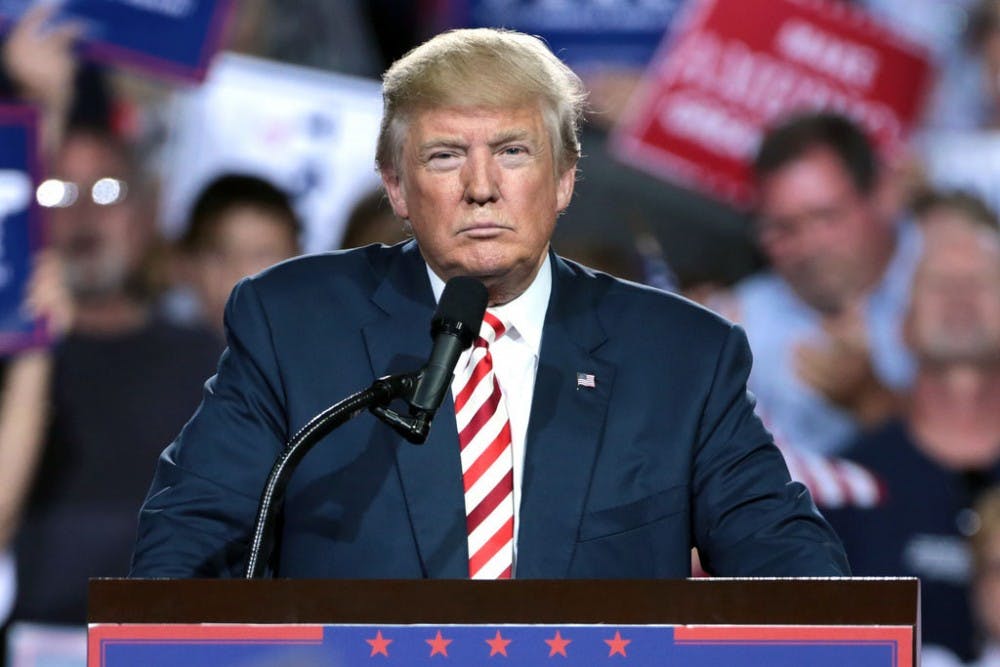After declaring the opioid epidemic a “public health emergency” in 2017, President Donald Trump recently followed up on the crisis by arguing that the United States should seek the death penalty for opioid drug traffickers. This punitive approach to the crisis is deeply flawed for several reasons. Primarily, a 2008 Supreme Court ruling regarding capital punishment means that it is unlikely that the death penalty would even be constitutionally permissible in these cases. Moreover, evidence suggests that the death penalty, mandatory minimums and other harsh penalties are not even effective at deterring future crime or lowering recidivism rates. Rather than seeking punishment that will have no deterrent effect, the Trump administration should focus its efforts on expanding access to treatment, increasing awareness regarding the risks associated with opioids and taking other precautionary measures to prevent addiction in the first place.
The opioid crisis began in the 1990s, when physicians began over-prescribing narcotics to patients as a means of improving patient pain satisfaction. As a result, patients began demanding narcotics that they did not really need and doctors continued to prescribe without adequately informing patients about the high risk associated with the consumption of these drugs. A significant portion of opioid addicts became unintentionally addicted after receiving unnecessary narcotic prescriptions after surgery, later turning to heroin and other synthetic opioids such as fentanyl when their narcotic prescriptions ran out. Since the 1990s, the crisis has skyrocketed. Not only has it resulted in an outrageous drug overdose rate, but it has also led to a significant increase in neonatal abstinence syndrome, criminal recidivism rates and the transmission of infectious diseases such as HIV and hepatitis C.
Many states have responded to this epidemic by better equipping emergency first responders. Naloxone — also known as Narcan — is an opiate antidote that can be used to reverse narcotic overdoses. Many states have equipped emergency responders with this antidote, made the drug available over-the-counter and have even adopted Good Samaritan laws, granting those who deliver the antidote at the scene of the overdose legal immunity from punishment.
Unfortunately, Narcan has become so widely available among first both responders and drug users alike that opioid users have been able to push their addiction beyond lethal limits. After being resuscitated by this drug, many addicts simply continue to give into the disease, failing to confront their addiction through proper treatment. As a result, a significant portion of opioid addicts receive Narcan treatment multiple times. A lack of proper treatment mechanisms in the U.S. has meant that the antidote has in some ways perpetuated this epidemic by enabling addicts with a safety net to overdose. In light of the severity of the opioid crisis, it is clear that more strides need to be taken by the federal government to provide preventative care and rehabilitative treatment.
Medication-assisted treatment has become one of the most effective ways to combat opioid addiction. The three most common medications used to treat opioid withdrawal are Methadone, Buprenorphine and Naltrexone. By counteracting withdrawal symptoms and weaning addicts off of life-threatening opioids, these treatments also prevent overdose, lower recidivism rates and prevent the spread of infectious diseases. But these drugs aren’t always easy to get.
To gain access to these drugs, addicts must have the funds, time and willpower necessary in order to effectively receive this form of treatment. Many treatment programs or federal drug courts require addicts to be completely detoxed or “fail first” at other treatments before being eligible to receive medication treatment. Some programs don’t even offer medication-assisted treatments at all. These requirements — though originally aimed at helping addicts — are ultimately counterintuitive because they render the most effective treatments practically unobtainable. In order to successfully combat the opioid epidemic, the federal government needs to eliminate these barriers to treatment and expand MAT services.
Hospitals and physicians also need to reevaluate the way they approach pain treatment. Recent studies suggest that non-opioid drugs such as Tylenol and Advil are are just as effective as narcotics in relieving pain. In addition to over-the-counter pain relievers, doctors should advocate the use of other non-addictive alternatives to narcotics such as local anesthetics, physical therapy and acupuncture. Medical and nursing schools need to be the lead advocates for change by emphasizing to medical professionals the high risks associated with over-prescription of narcotics.
There is extreme stigma against opioid addiction to this day, even though addiction is often completely unintentional due to lack of awareness. Recently, Trump remarked that “illegal drug use is not a victimless crime ... there is nothing admirable, positive or socially desirable about it.” However, this approach to the issue is completely counterproductive because it perpetuates negative stereotypes regarding addiction and shames people from seeking treatment. We need to fight the stigma against opioid addiction by recharacterizing it as a disease rather than labeling the addiction as shameful and self-inflicted. Expanding access to treatment, rather than arbitrarily seeking harsher penalties for drug pushers, is what will result in constructive change.
Audrey Fahlberg is a Viewpoint writer for The Cavalier Daily. She can be reached at opinion@cavalierdaily.com.






